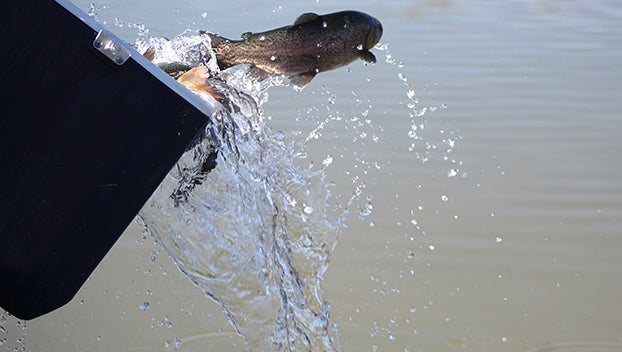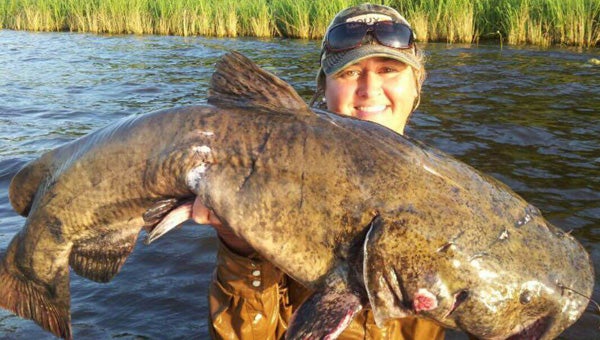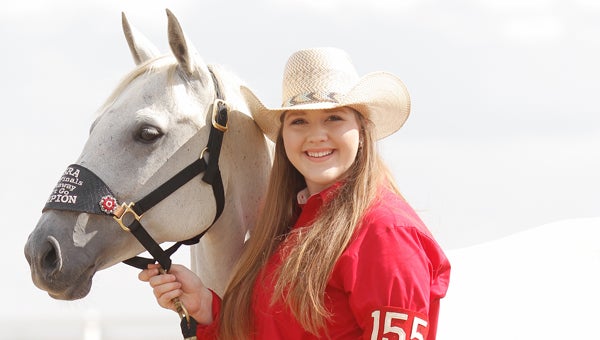Best season for catching big fish
Published 12:01 am Sunday, November 24, 2013
Not many people fished during the cold, wet weather we had yesterday. Years ago, a few of us would fish no matter what the weather offered us.
Old age combined with the lack of the great fish population of yesteryear are the culprits that keep me grounded on these cold, wet days.
I never thought I would see the day when a five-pound bass would draw attention in this area and win the big bass money in the local tournaments. In an area that used to produce 7, 8, 9 and 10-pound fish consistently, we are now lucky to catch one more than 5 pounds.
The good news is the best season for catching big fish is here. The surface water temperature is where it needs to be, and the fishing will get even better when it gets a bit colder.
We still compete in tournaments during bad weather, but a pleasure trip these days when the weather is at its worse is just not as fun anymore. Early last week before this front passed, I heard and saw many good catches of huge white perch. Some came from the Old Rivers at Deer Park and Vidalia, and some caught a few nice size perch from the Black River/Horseshoe Complex and connecting bayous.
Even on a windy day, you can fish the narrow bayous and find calm waters. The fish were not deep, yet. They may be deep now with another drop in water temperature. If the weather forecast holds up, we will have more cold weather during the upcoming holiday week.
Some forecast are predicting a low of 27 degrees by Wednesday. This has been the coldest month of November we have had in many years. My preference is cold water bass fishing. I like to fish deep water using sonar units to locate the fish.
Okhissa Lake in Franklin County is a good place to learn to fish deep water reservoirs. Flooded creek channels that drop to depths of 30 to 45 feet with 17 to 25 feet nearby are perfect areas to look for and catch big bass.
On the Louisiana side of the river, we have no reservoirs, but the old river oxbows still offer some great cold water fishing opportunities. After 35-plus years of fishing Lakes Concordia and St. John, I pretty much figured out you will not find many bass in water deeper than 10 feet.
These lakes have some deep water, but the bottom is bare of cover. The bass rarely hold in the deep water these two lakes have to offer. I do recall having some fair days during a cold January fishing jigging spoons in the Big Blue Hole on Concordia in 18 to 25 feet of water. This hole was a bend in the Mississippi River that used to be 65 feet deep when I first fished it as a teenager.
Over the years, the steep sides, the ledges, have faded away and about the deepest water you will find in the Blue Hole now is 40 feet. Try jigging spoons and there is no need to drop the spoon until you see the shad or bass on your sonar unit. If your unit is setup right, you can see the shad and/or bass and watch the spoon fall on the sonar screen.
I have watched as the fish hit the spoon, get hooked up and streak across the screen.
Lake Bruin will get a lot of attention the next three months. Bruin still has some sharp drops from 7 to 35 feet, and the bass will hang on these ledges.
Water clarity has a lot to do with fish location during the colder months. If the lake you are fishing is muddy, stay shallow and fish no deeper than about 10 to 12 feet. If the water is clear go deep.
Once you locate fish in deep water, the pattern will last much longer than the unreliable shallow water patterns that the majority of people fish.
Have a great Thanksgiving holiday. If you see me on the water next week, stop by for a visit.





